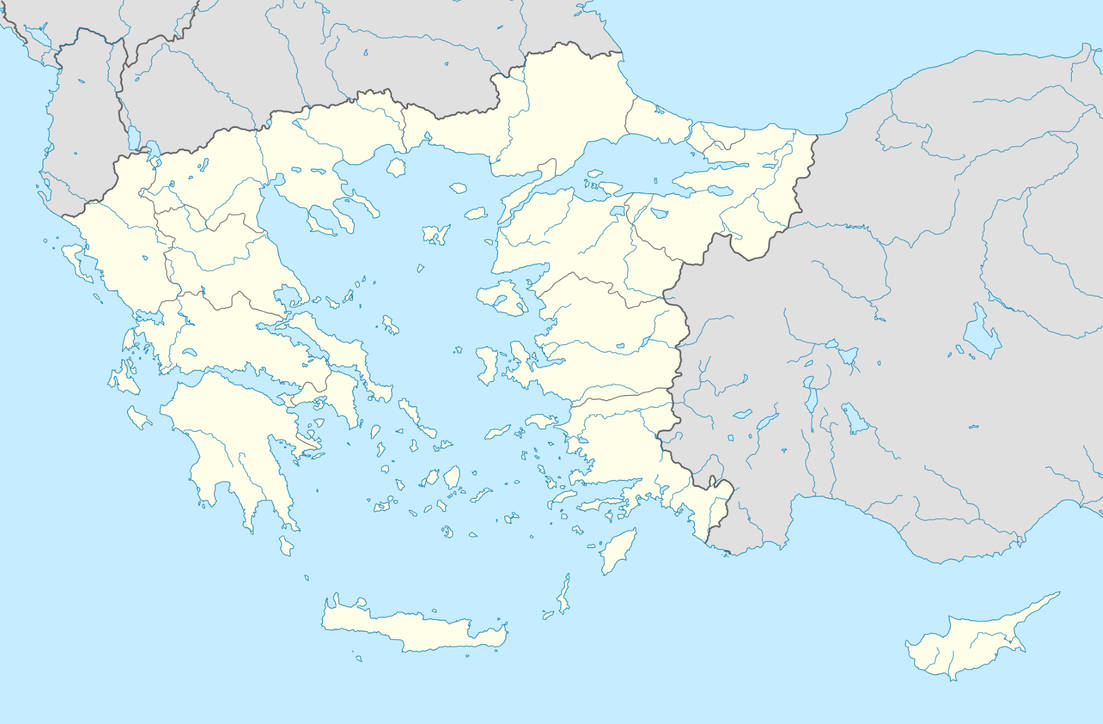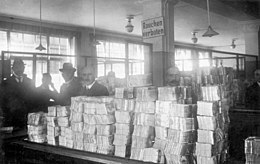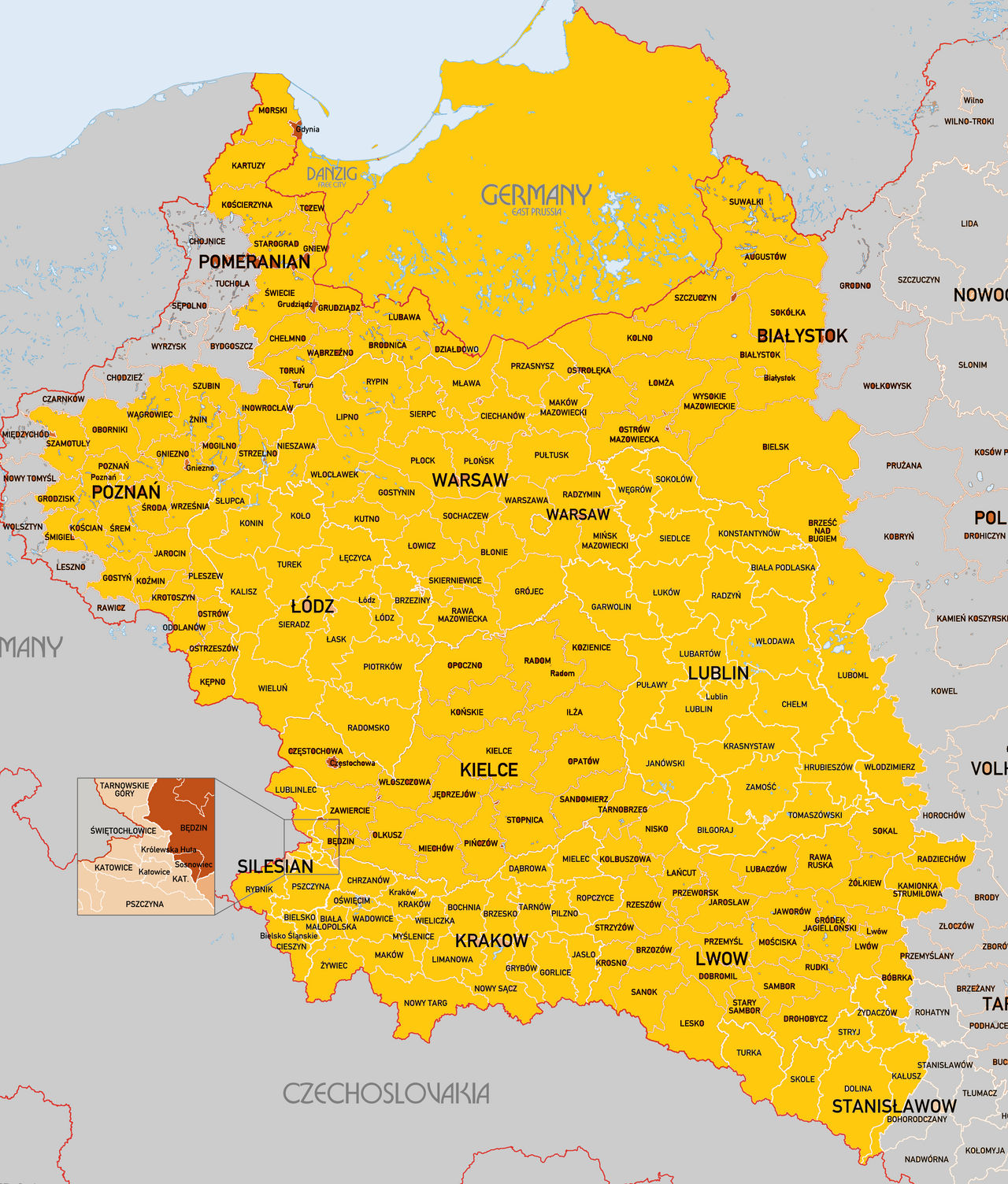Post by jjohnson on May 15, 2021 5:22:47 GMT
After the first World War, the allied powers had a defeated Germany and were set to have their revenge for years of war. US President Wilson, whose United States came in 1917 and was thinking to tell the Europeans what to do, and the Confederates, who had fought since 1915 against Mexico and Germany. They weren't having it for the most part, but both Wilson and CS President Howell were appalled at the brutality of the war, and wanted reconciliation, as the US and CS had done after their war together, and to rebuild Europe in a way to promote cooperation. Prime Minister Lloyd George had a public back home who wanted to 'make Germany pay,' while he personally wanted to build a strong Germany to stand as a bulwark against communism.
In the end the Treaty was negotiated to include the following points:
1. Germany could not join the new League of Nations; it would later join in a resolution in 1926, while the US and CS decline to join the organization, fearing being dragged into a new European War
2. Demilitarization of the Rhineland up to 31 miles east of the Rhine river, removing all fortifications and forbidding new construction, and territory west of the river would be occupied by the Allies up to 15 years to ensure compliance; this was loudly objected to by the Confederates, who thought it ridiculous as a violation of the sovereignty of nations
3. The Saar area would be given to France for 15 years to give its coal to France, in return for the destruction of French coal mines by Germany.
4. Germany will cede the following territories:
4a. Alsace-Lorraine (France)
4b. North Schleswig (by plebiscite, to Denmark)

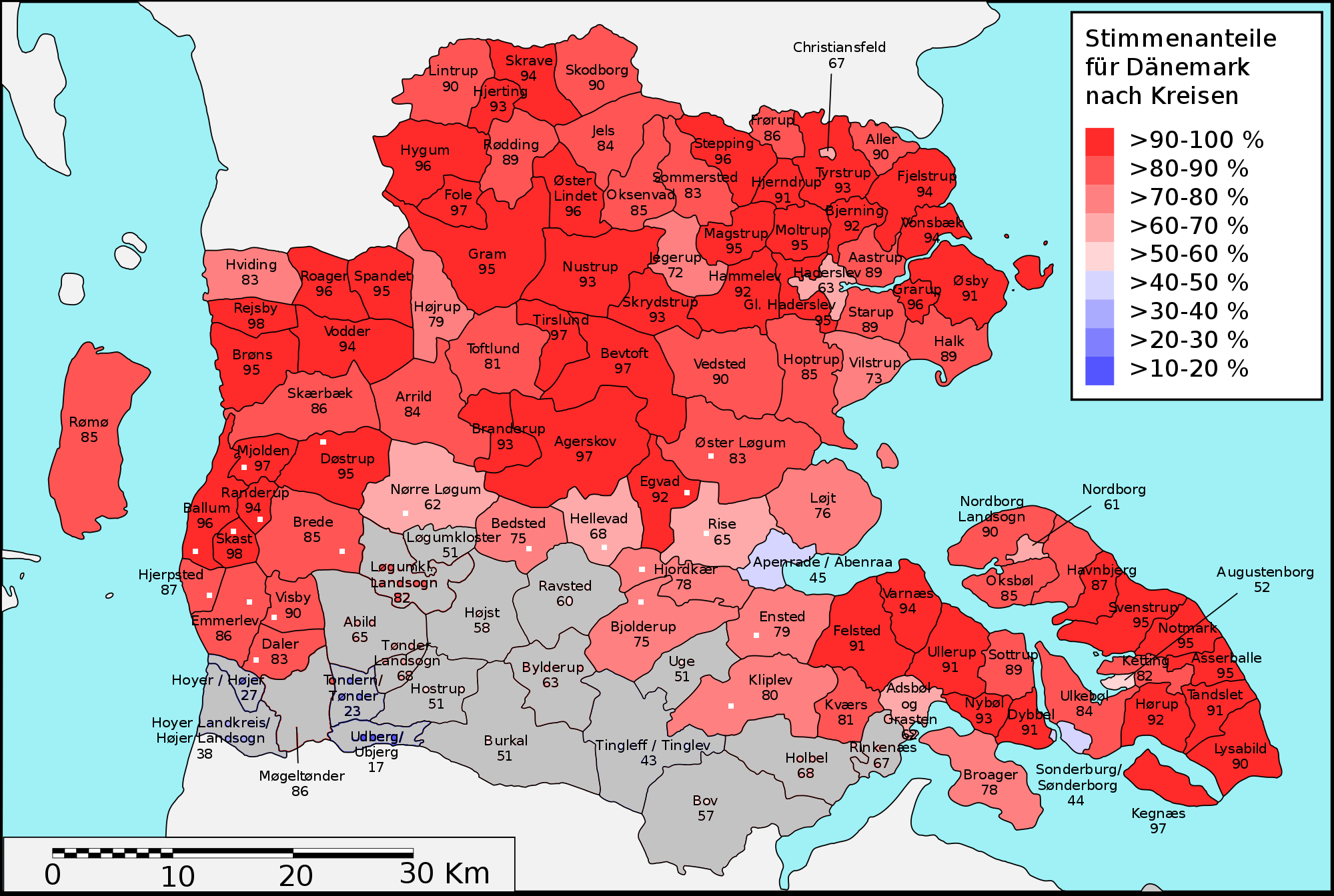
4b. Original proposed plebiscite; revised plan proposed by the Confederates, in view of the intense desire to punish Germany by France.
4c. Hulschin to Czechoslovakia and Upper Silesia to Poland (via plebiscite)
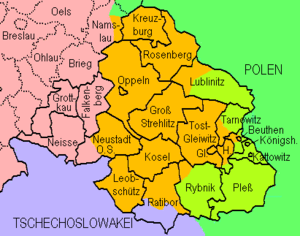
4d. Posen to Poland, except the western counties bordering Silesia, Brandenburg, and West Prussia; West Prussia divided to create a 'Polish Corridor', resulting in the following counties forming 'Posen-West Prussia':
Posen: Bromberg, Wirsitz, Kolmar, Czarnikau, Filehne, Birnbaum, Schwerin an der Warthe, Meseritz, Bomst, Fraustadt, Lissa, Rawitsch
West Prussia: Deutsch Krone, Flatow, Schlochau, Tuchel, Konitz
And the following counties to be merged into East Prussia: Elbing, Elbing-Land, Marienburg in West Prussia, Marienwerder, Rosenberg in West Prussia, Stuhm. Danzig became a 'Free City.' Austria was forbidden to merge with Germany, as more than 80% of the population wanted, and Memelland was ceded to Lithuania. Its colonies were given to the British and French. Belgium got 5 million Marks and 500 tons of steel annually for 10 years, rather than territory.

5. Germany's army would be cut to 100,000 men, and have sharp limits on its navy (15,000 men), and no air force.
6. Germany had to pay 132 billion marks (31.4 billion USD) to the allied powers, though this was later reduced after horrible hyperinflation and a lot of human suffering and starvation, to about 50 billion via a series of bonds.
7. Germany had to accept blame for starting the war, and was not allowed to negotiate this point, which was viewed by many as a 'dictated peace,' which the Confederates balked at, yelling at the French especially, but the British as well, that they *wanted* to taunt the Germans into starting a new war.
Austria, for its part in the war, partially in keeping with Wilson's idea of ethnic nation-states, largely got its 'German Austria' borders, but Teschen was divided between Czechoslovakia and Poland


Austrians were also required to give ethnic minorities linguistic rights within their territory.
The new Germany suffered quite a bit of instability, with hyperinflation in the early 20s, which finally cleared by by the mid to late 1920s, though when the depression spread to Europe, Germany was hit hard due to the shuffling of money between it, France, Britain, and the United States for the repayment of reparations, and with the crash, the national socialist party was able to gain power slowly but surely until it finally seized total power in 1933.
Post-War Germany, Again

After the end of the second world war, the allied powers (the USSR, UK, US, CS, France, and their other allies) were determined to remove the threat of Germany from Europe. President Taft (US) initially considered the Morgenthau Plan, breaking Germany into multiple nations, though President Peery (CS) persuaded him that they needed a stronger, united Germany to keep stability in central Europe and avoid the starvation of over 25 million Germans which would be the result of that plan.
At the last conference at Potsdam, the Allied Powers agreed to occupation of Germany by all four nations (USSR, US, UK, CS). East Prussia and Danzig would be ceded to Poland, while its eastern border would be shifted westward on Russia's demand to create more of a buffer between it and the west, having been invaded from the west multiple times already. But the western powers denied Poland's request for additional territory from Germany, as they saw Poland as a suitable buffer, and behind-the-scenes doubts by the Confederates under President Peery about the communists, and President Taft from the US as well. The resultant Poland was 271,094 km2 in area.
The Allies agreed to the dismantling of the state of Prussia, and occupation zones for each of the major powers:
USSR: Saxony-Anhalt, Saxony, Upper Silesia, Lower Silesia, Posen-West Prussia, Pomerania, Mecklenburg
US: Bremen, Bavaria, Thuringia
CS: Rhineland, Westphalia, Hessen
UK: Schleswig-Holstein, Hamburg, Hannover, Lübeck
France: Baden, Saarland
This Germany was limited to a defense force, and could not initiate war on any country by constitution. Austria was required to be neutral, and its occupation ended in 1952. Germany's western zones became the Bizone, Trizone, then Quadrizone by 1949, causing the declaration of the German Social Democratic Republic in October of 1949.
The western state of Germany created a constitution for the entire German people, though this would not be fully realized until the 1990s. The Constitution created a strong set of limits on the confederated government, with strong protections for minority rights, free speech, jury trials, and privacy. The Volkstag (lower house) began with 402 members, and the Landtag (upper house) began with 3 members per state, 36 to start.
The eastern Germany decided to implement greater control of the state on the model of the Soviet Union, establishing a unitary state, abolishing the states, and reorganizing them as districts:
Rostock, Köslin (West Baltic, East Baltic)
Schwerin, Neubrandenburg, Frankfurt, Schneidemühl
Magdeburg, Potsdam, Cottbus, Schwiebus (orange)
Halle, Leipzig, Karl-Marx Stadt, Dresden
Liegnitz, Schweidnitz, Breslau, Oppeln
East Berlin

East Germany faced a number of issues from its inception as the Soviet Occupation Zone. Thousands of socialists and communists traveled into the east to live in a socialist state, believing that 'with us in charge, socialism (or communist) will work!' From 1945-6, 1.6 million refugees left the Soviet zone for the west, leading to barbed-wire fences and watchtowers. The border closed to try to stem the tide of people escaping communism, but by 1961, 3.5 million East Germans fled west, mostly via West Berlin and its corridor to the west. In 1947, the USSR deported all Volga Germans to East Germany (around 745,000 people), and all Germans in communist Europe, totaling around 5.1 million people coming from Poland, Hungary, Yugoslavia, Romania, Ukraine, and the former East Prussia, which helped, but the tide kept up until the closing of the border in 1962 with the Inner German Border going up.
Throughout its history, East Germany struggled to become stable, with declining birth rates, inefficient industry (and 1/3 of it being removed by the Soviets before they stopped), and corrupt and invasive government.
East Germany faced issues with refugees from the Volga ASSR's dissolution, and having to absorb several hundred thousand new Germans from the east that were expelled into its territory. It then faced the brain drain to the west, resulting in the Berlin Crisis in the early 1960s. Khrushchev secretly placed Soviet missiles in Venezuela, which had its own communist revolution in 1959 after its economic crisis, in 1962, and the US, CS, and USSR worked out a compromise that the US would remove its (obsolete) Jupiter missiles from Turkey, and the USSR would remove its missiles from Venezuela, the US and CS would not invade Venezuela. Khrushchev then built a wall around West Berlin, eliminating the problem of the brain drain.
Despite its larger industrial base of Silesia, East Germany's economy slowed in comparison to the western counterpart, which had a much more vibrant economy. Escapes were big news in West Germany, which publicized that if socialism and communism were so great, why did people risk life and limb to escape. One famous escape was two families of 8 escaping via hot air balloon from Reuth in communist Saxony into Thuringia.
The country lost control of its border with Hungary removing its fence with Austria near Vierburgenland's capital of Ödenburg. Hungary announced it would not stop movement from Hungary into Austria, leading to 22,000 East Germans fleeing into Austria and on into West Germany. Demonstrations against the Socialist Unity Party government and the obviously rigged elections grew, starting in Saxony, growing to 300,000 people by November of 1989. On November 4, Czechoslovakia opened its border with Austria also, with 30,000 East Germans leaving Schweidnitz and going into the Austrian state of North Bohemia. The SED tried to propose a law to loosen travel restrictions, but the Volkskammer rejected it on the 5th, and the Cabinet and Politburo resigned, leaving only the complete abolition of travel restrictions to Krenz, the leader of East Germany.
On November 9, sections of the Berlin Wall were opened, leading to thousands of East Germans crossing over freely for the first time in 30 years. Krenz resigned, and the SED opened negotiations with the nascent republican movement, Neues Forum, for scheduling free elections and beginning democratization. To start, the SED eliminated the constitutional guarantee of a communist leadership of the state, approved December 1, 1989.
The election was held March 11, 1990, with the winner a coalition headed by the East German branch of the West German Christian Republican Confederation, which advocated speedy reunification with the west, and devolution of power to reconstituted east German states. Over several months, talks were held and by a 2/3 vote in its Volkskammer, East Germany declared its accession to the Confederation of German States (West Germany). The states of Pomerania, Mecklenburg, Brandenburg, Saxony-Anhalt, Saxony, Lower Silesia, Upper Silesia, Berlin, and Posen-West Prussia were reconstituted, the Ostmark abolished, traded at 2 to 1 for the now German Mark. Despite the official state socialism, beginning in 1990, American and Confederate German-speaking missionaries went to the former eastern Germany to preach the gospel, helping turn the tide of atheism, while many of the old monuments to Karl Marx and Friedrich Engels and Stalin were destroyed in effigy of their suffering. East German businesses, much less efficient and much more primitive than their western counterparts, were unable to compete with their free market western counterparts, but due to the integration plan, many eastern businesses got loans to modernize their equipment (from western companies), and training in market economics (from the von Mises Institute, amongst others), and guaranteed two years without western competition, to allow them to catch up. About 45% remained open after that time, the rest being bought out by western companies who then funded modernization and retraining.
The reunified Germany now has 22 states, an 88-member Landtag, 459-member Volkstag, and a population of 96.5 million as of 2020. The eastern portions of Germany have a lot of rural area which is quite sought-after by western Germans looking for a slower pace of life, while growing Autobahn routes, railroad, and high speed rail make the travel time easier to manage.
From 1945-1991, the Landtag had 3 persons per Land, giving Western states 42 representatives to the state; this became 4 in 1991. Each state had 1 Volkstag member at a minimum, with 153 members to start in 1949, with each census to determine the apportionments every decade, starting in 1950.
In the end the Treaty was negotiated to include the following points:
1. Germany could not join the new League of Nations; it would later join in a resolution in 1926, while the US and CS decline to join the organization, fearing being dragged into a new European War
2. Demilitarization of the Rhineland up to 31 miles east of the Rhine river, removing all fortifications and forbidding new construction, and territory west of the river would be occupied by the Allies up to 15 years to ensure compliance; this was loudly objected to by the Confederates, who thought it ridiculous as a violation of the sovereignty of nations
3. The Saar area would be given to France for 15 years to give its coal to France, in return for the destruction of French coal mines by Germany.
4. Germany will cede the following territories:
4a. Alsace-Lorraine (France)
4b. North Schleswig (by plebiscite, to Denmark)


4b. Original proposed plebiscite; revised plan proposed by the Confederates, in view of the intense desire to punish Germany by France.
4c. Hulschin to Czechoslovakia and Upper Silesia to Poland (via plebiscite)

4d. Posen to Poland, except the western counties bordering Silesia, Brandenburg, and West Prussia; West Prussia divided to create a 'Polish Corridor', resulting in the following counties forming 'Posen-West Prussia':
Posen: Bromberg, Wirsitz, Kolmar, Czarnikau, Filehne, Birnbaum, Schwerin an der Warthe, Meseritz, Bomst, Fraustadt, Lissa, Rawitsch
West Prussia: Deutsch Krone, Flatow, Schlochau, Tuchel, Konitz
And the following counties to be merged into East Prussia: Elbing, Elbing-Land, Marienburg in West Prussia, Marienwerder, Rosenberg in West Prussia, Stuhm. Danzig became a 'Free City.' Austria was forbidden to merge with Germany, as more than 80% of the population wanted, and Memelland was ceded to Lithuania. Its colonies were given to the British and French. Belgium got 5 million Marks and 500 tons of steel annually for 10 years, rather than territory.

5. Germany's army would be cut to 100,000 men, and have sharp limits on its navy (15,000 men), and no air force.
6. Germany had to pay 132 billion marks (31.4 billion USD) to the allied powers, though this was later reduced after horrible hyperinflation and a lot of human suffering and starvation, to about 50 billion via a series of bonds.
7. Germany had to accept blame for starting the war, and was not allowed to negotiate this point, which was viewed by many as a 'dictated peace,' which the Confederates balked at, yelling at the French especially, but the British as well, that they *wanted* to taunt the Germans into starting a new war.
Austria, for its part in the war, partially in keeping with Wilson's idea of ethnic nation-states, largely got its 'German Austria' borders, but Teschen was divided between Czechoslovakia and Poland

Austrians were also required to give ethnic minorities linguistic rights within their territory.
The new Germany suffered quite a bit of instability, with hyperinflation in the early 20s, which finally cleared by by the mid to late 1920s, though when the depression spread to Europe, Germany was hit hard due to the shuffling of money between it, France, Britain, and the United States for the repayment of reparations, and with the crash, the national socialist party was able to gain power slowly but surely until it finally seized total power in 1933.
Post-War Germany, Again

After the end of the second world war, the allied powers (the USSR, UK, US, CS, France, and their other allies) were determined to remove the threat of Germany from Europe. President Taft (US) initially considered the Morgenthau Plan, breaking Germany into multiple nations, though President Peery (CS) persuaded him that they needed a stronger, united Germany to keep stability in central Europe and avoid the starvation of over 25 million Germans which would be the result of that plan.
At the last conference at Potsdam, the Allied Powers agreed to occupation of Germany by all four nations (USSR, US, UK, CS). East Prussia and Danzig would be ceded to Poland, while its eastern border would be shifted westward on Russia's demand to create more of a buffer between it and the west, having been invaded from the west multiple times already. But the western powers denied Poland's request for additional territory from Germany, as they saw Poland as a suitable buffer, and behind-the-scenes doubts by the Confederates under President Peery about the communists, and President Taft from the US as well. The resultant Poland was 271,094 km2 in area.
The Allies agreed to the dismantling of the state of Prussia, and occupation zones for each of the major powers:
USSR: Saxony-Anhalt, Saxony, Upper Silesia, Lower Silesia, Posen-West Prussia, Pomerania, Mecklenburg
US: Bremen, Bavaria, Thuringia
CS: Rhineland, Westphalia, Hessen
UK: Schleswig-Holstein, Hamburg, Hannover, Lübeck
France: Baden, Saarland
This Germany was limited to a defense force, and could not initiate war on any country by constitution. Austria was required to be neutral, and its occupation ended in 1952. Germany's western zones became the Bizone, Trizone, then Quadrizone by 1949, causing the declaration of the German Social Democratic Republic in October of 1949.
The western state of Germany created a constitution for the entire German people, though this would not be fully realized until the 1990s. The Constitution created a strong set of limits on the confederated government, with strong protections for minority rights, free speech, jury trials, and privacy. The Volkstag (lower house) began with 402 members, and the Landtag (upper house) began with 3 members per state, 36 to start.
The eastern Germany decided to implement greater control of the state on the model of the Soviet Union, establishing a unitary state, abolishing the states, and reorganizing them as districts:
Rostock, Köslin (West Baltic, East Baltic)
Schwerin, Neubrandenburg, Frankfurt, Schneidemühl
Magdeburg, Potsdam, Cottbus, Schwiebus (orange)
Halle, Leipzig, Karl-Marx Stadt, Dresden
Liegnitz, Schweidnitz, Breslau, Oppeln
East Berlin

East Germany faced a number of issues from its inception as the Soviet Occupation Zone. Thousands of socialists and communists traveled into the east to live in a socialist state, believing that 'with us in charge, socialism (or communist) will work!' From 1945-6, 1.6 million refugees left the Soviet zone for the west, leading to barbed-wire fences and watchtowers. The border closed to try to stem the tide of people escaping communism, but by 1961, 3.5 million East Germans fled west, mostly via West Berlin and its corridor to the west. In 1947, the USSR deported all Volga Germans to East Germany (around 745,000 people), and all Germans in communist Europe, totaling around 5.1 million people coming from Poland, Hungary, Yugoslavia, Romania, Ukraine, and the former East Prussia, which helped, but the tide kept up until the closing of the border in 1962 with the Inner German Border going up.
Throughout its history, East Germany struggled to become stable, with declining birth rates, inefficient industry (and 1/3 of it being removed by the Soviets before they stopped), and corrupt and invasive government.
East Germany faced issues with refugees from the Volga ASSR's dissolution, and having to absorb several hundred thousand new Germans from the east that were expelled into its territory. It then faced the brain drain to the west, resulting in the Berlin Crisis in the early 1960s. Khrushchev secretly placed Soviet missiles in Venezuela, which had its own communist revolution in 1959 after its economic crisis, in 1962, and the US, CS, and USSR worked out a compromise that the US would remove its (obsolete) Jupiter missiles from Turkey, and the USSR would remove its missiles from Venezuela, the US and CS would not invade Venezuela. Khrushchev then built a wall around West Berlin, eliminating the problem of the brain drain.
Despite its larger industrial base of Silesia, East Germany's economy slowed in comparison to the western counterpart, which had a much more vibrant economy. Escapes were big news in West Germany, which publicized that if socialism and communism were so great, why did people risk life and limb to escape. One famous escape was two families of 8 escaping via hot air balloon from Reuth in communist Saxony into Thuringia.
The country lost control of its border with Hungary removing its fence with Austria near Vierburgenland's capital of Ödenburg. Hungary announced it would not stop movement from Hungary into Austria, leading to 22,000 East Germans fleeing into Austria and on into West Germany. Demonstrations against the Socialist Unity Party government and the obviously rigged elections grew, starting in Saxony, growing to 300,000 people by November of 1989. On November 4, Czechoslovakia opened its border with Austria also, with 30,000 East Germans leaving Schweidnitz and going into the Austrian state of North Bohemia. The SED tried to propose a law to loosen travel restrictions, but the Volkskammer rejected it on the 5th, and the Cabinet and Politburo resigned, leaving only the complete abolition of travel restrictions to Krenz, the leader of East Germany.
On November 9, sections of the Berlin Wall were opened, leading to thousands of East Germans crossing over freely for the first time in 30 years. Krenz resigned, and the SED opened negotiations with the nascent republican movement, Neues Forum, for scheduling free elections and beginning democratization. To start, the SED eliminated the constitutional guarantee of a communist leadership of the state, approved December 1, 1989.
The election was held March 11, 1990, with the winner a coalition headed by the East German branch of the West German Christian Republican Confederation, which advocated speedy reunification with the west, and devolution of power to reconstituted east German states. Over several months, talks were held and by a 2/3 vote in its Volkskammer, East Germany declared its accession to the Confederation of German States (West Germany). The states of Pomerania, Mecklenburg, Brandenburg, Saxony-Anhalt, Saxony, Lower Silesia, Upper Silesia, Berlin, and Posen-West Prussia were reconstituted, the Ostmark abolished, traded at 2 to 1 for the now German Mark. Despite the official state socialism, beginning in 1990, American and Confederate German-speaking missionaries went to the former eastern Germany to preach the gospel, helping turn the tide of atheism, while many of the old monuments to Karl Marx and Friedrich Engels and Stalin were destroyed in effigy of their suffering. East German businesses, much less efficient and much more primitive than their western counterparts, were unable to compete with their free market western counterparts, but due to the integration plan, many eastern businesses got loans to modernize their equipment (from western companies), and training in market economics (from the von Mises Institute, amongst others), and guaranteed two years without western competition, to allow them to catch up. About 45% remained open after that time, the rest being bought out by western companies who then funded modernization and retraining.
The reunified Germany now has 22 states, an 88-member Landtag, 459-member Volkstag, and a population of 96.5 million as of 2020. The eastern portions of Germany have a lot of rural area which is quite sought-after by western Germans looking for a slower pace of life, while growing Autobahn routes, railroad, and high speed rail make the travel time easier to manage.
From 1945-1991, the Landtag had 3 persons per Land, giving Western states 42 representatives to the state; this became 4 in 1991. Each state had 1 Volkstag member at a minimum, with 153 members to start in 1949, with each census to determine the apportionments every decade, starting in 1950.










